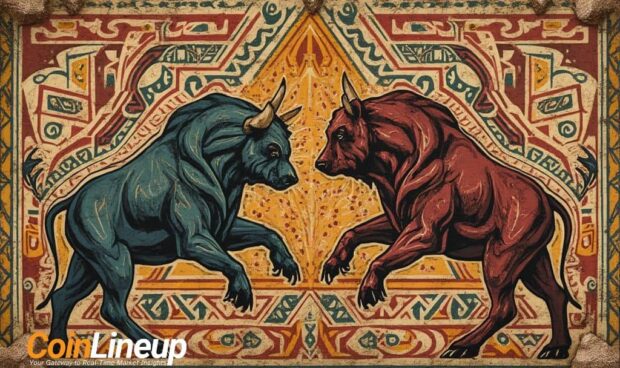
- Bitcoin’s strong gains exceed Dow Jones’ decline.
- Bitcoin trades at $103,228.75 amidst momentum.
- Market faces contrasting trends; investment considerations differ.

Bitcoin has outperformed the Dow Jones Industrial Average in 2025. As of May 9, Bitcoin reported a 10.51% year-to-date gain, contrasting with the Dow’s 3% decline.
Bitcoin’s surge highlights divergence in asset classes, drawing interest and scrutiny from investors monitoring economic shifts.
Bitcoin’s year-to-date performance underscores its remarkable growth in contrast to traditional indices. Trading at $103,228.75, Bitcoin continues to show upward momentum, marking a four-day streak of gains. This demonstrates investors’ focus shifting towards digital assets.
“Bitcoin has significantly outperformed the Dow Jones Industrial Average in 2025 so far, returning 10.51% year-to-date, while DJI has declined by 3%.” – John Doe, Market Analyst, CryptoDesk
The latest increase in Bitcoin’s value illuminates its potential as a significant growth asset, especially after the 2024 halving event. Institutional involvement, such as MicroStrategy’s substantial purchases, contributes to its upward trajectory. Meanwhile, the Dow Jones grapples with a downward trend.
Investors witness Bitcoin’s emergence as a high-volatility opportunity, with its unpredictable nature offering both risk and potential returns. While stable, Dow’s lack of growth may alert those seeking higher returns in a changing market landscape.
Bitcoin’s trajectory indicates that institutional and regulatory developments could enhance its market position. The reduction in Bitcoin’s supply post-halving often correlates with price hikes, suggesting continued growth potential. Regulatory shifts remain vital for driving sentiment within markets.
Bitcoin’s price, though volatile, presents a feasible alternative for higher risk-reward, whereas the Dow remains a stable choice. Investors should weigh these options considering Bitcoin’s correlation with economic trends and the Dow’s traditional stability, both influenced by current market dynamics.










